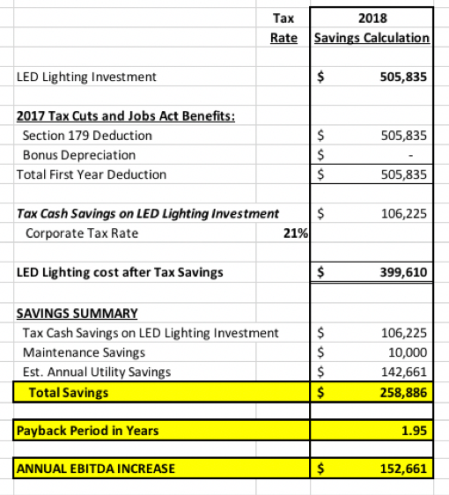Reducing Hospital Operating Costs without Impacting Patient Care
Healthcare Financial Management Association – The Case for Greater Cost Control
According to Rich Daly, Healthcare Financial Management Association (HFMA) Senior Editor Hospital and Health Care systems have realized they aren’t going to grow their way out of the margin pressures that they are facing.
The case for greater cost control at hospitals received its latest boost from a recent national survey of hospital executives. The growing urgency comes amid shrinking margins and cash flow.
Cost control eclipsed revenue growth as the top priority among health system CEOs, according to Advisory Board’s Annual Health Care CEO Survey. The nationwide survey of 146 C-suite executives, conducted between December 2017 and March 2018, found 62 percent “were extremely interested” in cost control.
Similarly, “innovative approaches to expense reduction” was the second-leading priority (56 percent).
“It was certainly eye-opening to see cost control as the new number one issue facing hospital and health system executives because it really confirmed conversations we’ve been having with leaders,” said Rob Lazerow, managing director of Advisory Board Research.
Among the 33 topics about which executives were asked their level of concern, other leading priorities included:
- Exploring diversified, innovative revenue streams (56 percent)
- Boosting outpatient-procedure market share (50 percent)
- Meeting rising consumer demands for service (50 percent)
The recent cost concern findings followed an April report from Moody’s Investors Service that the median operating cash flow margin for 160 not-for-profit and public hospitals in 2017 declined to 8.1 percent, which was below levels recorded during the 2008-09 recession.
Similarly, the American Hospital Association’s 2018 chartbook found the percentage of hospitals with negative total and operating margins had increased by the end of 2016 to recession-era levels.
“Hospital and health system leaders have been facing margin compression—deteriorating or declining margins—for a few years,” Lazerow said, referring to trends since 2015. “Hospital and health system leaders realized they weren’t going to be able to grow their way out of the margin pressures that they are facing right now.”
According to Moody’s, the decline in median operating cash flow margin came amid accelerating expenses and reduced revenue growth, with expense growth in FY17 outpacing revenue growth for the second year in a row.
Moody’s cited an uptick in operating expenses of not-for-profit and public hospitals, with the increase stemming at least partly from the tight labor market.
After a multiyear hiring spree, hospital employment has reached all-time highs—and labor is the largest single component of hospital costs, according to a 2017 Deloitte report based on interviews with 20 health system CEOs. Deloitte estimated that labor expenses make up roughly 50 percent of total operating costs for most hospitals.
Hospital Cost Cutting Strategy #1 – LED Lighting
Rather than cutting staff one of the biggest expenses for a hospital is utility costs and transitioning from traditional to LED lighting may be one of the most overlooked opportunities to significantly improve patient care and reduce operating costs.
Hospitals in the U.S. spend an average of $1.67 on electricity per square foot annually. Some estimates suggest that hospitals spend between 40% – 60% of their total energy budget on lighting alone.
Since hospitals lights are on 24 hours per day and most lighting lifetimes are shorter than advertised. As a result, LED lighting that has a much longer lifetime and costs less to use can reduce costs significantly in a hospital setting.
If lighting expenses can be reduced by even 10%, that’s a significant savings in energy consumption and savings that can be transferred directly to patient care.
How Can LED Lighting Save Money in a Hospital’s Operational Budget?
LED lighting can reduce the overall cost to your operational budget (OPEX) in several ways:
- LED lighting is approximately 70% more efficient than other forms of lighting such as traditional fluorescent lights and can last up to ten times longer, reducing maintenance hours and improving inventory control.
- LED lights are mercury free and therefore are hazardous free. As a result, they don’t require special handling or disposal fees.
Additional benefits also apply in the operating room.
In 2011, The U.S. Department of Energy, in its LED Surgical Task Lighting study confirmed that, compared with halogen lights, LED lights:
Used less wattage to produce equivalent light levels.
- Cooler to the touch and emitted less heat into the room.
- Promised greater life and a non-catastrophic failure mechanism.
Overall, the study suggested that LEDs “can allow for reductions in a connected load of 50 percent or more, with potential additional energy savings through constant-color dimming and reduced cooling load in the operating room.”
In addition to reducing expenses, modern LED lighting also has a number of benefits for practitioners and patients:
- Properly lit work areas and patient care areas can help reduce stress and errors.
- Bright light that comes closest to natural daylight helps reduce depression.
- A couple of other studies suggest that exposure to light may be linked to length of stay among clinically non-depressed patients. (1)
- Mortality rates are consistently higher in dull rooms.(1)
- Patients with better light Incurred 21% less medication costs. (1)
- The Impact of Light on Outcomes in Healthcare Settings
LED Case Study #1 – St. Catherine Hospital | Centura Health – Garden City, Kansas
Background – Project consisted of converting interior and exterior lighting to LED for a 102 bed Joint Commission Accredited regional health center. The project involved retrofitting a total of 3,186 interior and exterior fixtures consisting of 7,048 lamps.
Outcome – Reduced total annual kWh usage from 1,577,082 to 444,208 kWh – a 77% reduction in kWh and equated to an annual utility savings of over $78,000 with an average increase in foot candles by 15% with a project payback of 3.3 years
Award– ASG Energy working with BCS Performance Solutions was award the 2018 Energy Manager Project of the Year for 2018 for St. Catherine Hospital.
LED Case Study #2 – Hutchinson Regional Medical Center – Hutchinson, Kansas
Background – Project consisted of converting interior lighting to LED for a 199 bed regional health center serving the health needs of over 65,000 residents. The project involved retrofitting a 164,400 square foot facility with a total of 3,462 interior fixtures consisting of 9,370 lamps.
Outcome – Reduced total annual kWh usage from 1,712,550 to 495,278 kWh – a 71% reduction in kWh and equated to an annual utility savings of over $96,000 with an average increase in foot candles by 21% and an associated project payback of 3.3 years
Hospital Cost Cutting Strategy #2 – Air Conditioning Optimization
Given that air conditioning and air handling systems typically account for 40-60% of a buildings electricity costs, this platform has shown to save 15-40% of cooling energy spend across a variety of implementations. This is what we refer to as “The Next Level of Retro-Commissioning” – beyond what a lot of other existing “retro-commissioning” practices claim to do when it comes to improving energy efficiency in chiller systems.
Dynamic Chiller Optimization is taking retro-commissioning to the next level by incorporating dynamic variables that impact energy utilization and load balancing across the entire cooling eco-system within a facility. The platform has been designed in order to maximize the results and
DOES NOT:
- Impact the thermostat settings.
- Have any disruption of operations.
- Require any new HVAC equipment.
- Have any upfront capital costs.

Benefits
- Cost Reduction 15% – 40%
- Low Payback – Under 3 Years
- Performance Guarantee
Key Features
- Dynamic Chilling Optimization
- Non-Intrusive Implementation
- Remote Monitoring
- Flexible BMS or HMI Interface Integration
- Automated Response System
This “clean-tech solution” is ideally suited toward facilities that have large central cooling systems with a chilled water loop and installed chiller capacity of over 200 tons, as these types of environments can greatly benefit from this optimization. For more information visit https://bit.ly/2SvGq24
Financing Options
CFO’s are always looking for cost saving initiatives, but the hurdle is how to fund them out of current cash flow. Fortunately, there are many financing options related to green investments and some include no cash outlay and the hospital still incurs a utility savings. ASG partners offer Energy Service Agreements (“ESA”) that utilize the energy savings to pay for energy upgrades avoiding up front capital investment and keeping the project off the balance sheet. The monthly ESA payments are fully funded out of the savings created by the energy savings; however, the ASG Energy financing partner only allocates about 80% of the savings to the project payback, the other 20% is retained by the hospital to reduce ongoing operating costs.
Additionally, ASG Energy has partners that also offer traditional leasing, financing and other creative financing alternatives.
Conclusion
Hospital Administrations must think creatively in today’s environment to reduce fixed cost of running a hospital without impacting patient care and safety. Therefore, implementing the 2 hidden cost savings strategies of LED lighting and Air Conditioning Optimization are proven methods to significantly reduce operating costs and improve the hospital environment.
Do not hesitate in implementing these strategies while Medicare dollars are being cut, insurance companies are applying pressure to reduce costs and procedures and the baby boomers are aging. Remember do not let capital stop you there are many financing options available, contact ASG Energy immediately.
About ASG Energy LLC
ASG Energy LLC is a comprehensive LED energy solutions provider, with a successful track record of managing energy reduction initiatives and installations for several Fortune 500 companies and hospitals throughout the U.S. ASG utilizes professional project managers and engineers for all our commercial and industrial customers, medical centers and schools to assist our clients in realizing rapid cost savings, as well as, reducing greenhouse gas emissions and improving facility lighting and safety. For additional information please visit www.asgenergyllc.com or email at info@asgenergyllc.com.















![canstockphoto23996099[1]](https://keithmcaslan.files.wordpress.com/2018/02/canstockphoto239960991.jpg?w=450) BULB CRUSHING BECOMING AN IMPORTANT PART OF RETROFIT PROJECTS
BULB CRUSHING BECOMING AN IMPORTANT PART OF RETROFIT PROJECTS